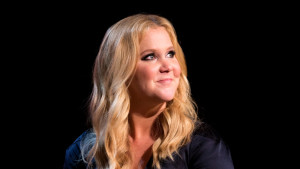This article was originally published via The Guardian Media Network.
 As well as the rise of comedian and actor Amy Schumer, 2015 saw the continual rise, and industry acceptance, of over-the-top (OTT) internet TV services such asNetflix and HBO NOW.
As well as the rise of comedian and actor Amy Schumer, 2015 saw the continual rise, and industry acceptance, of over-the-top (OTT) internet TV services such asNetflix and HBO NOW.One of Schumer’s biggest achievements last year was her Live at the Apollo HBO special. In October, a few days before the show premiered on HBO and HBO NOW (the OTT subscription service that doesn’t require a pay TV subscription), my friend said she was about to sign up to HBO NOW. Her thought process was that she didn’t have a pay TV provider, but she wanted to watch the special as soon as it became available. “It’s $15 per month but you get a seven day free trial,” she said. “I can drop it whenever I want.”
I work at Kaltura, where we design online video services, so through the companies we work with we’re acutely aware of churn – customers discontinuing a service – and the problem it poses for OTT services in particular.
While churn was always an issue for service providers, OTT made it much trickier to fight. With paid TV, it takes one phone call to the call centre, convincing several different representatives that you are definitely quitting. Then you have to take the set-top box to the nearest service centre. It takes determination to go through with it. With OTT video apps, all you need to do is tap the screen and you’re free. The consumer’s dream is the service provider’s worst nightmare.
Subscribers cancelling OTT services as a percentage of the current subscriber base, in US broadband households. Illustration: Parks Associates
 A study from Parks Associates (see graphic) sums up the problem. Viewers sign up and get their fix, knowing that they can drop the service any time and subscribe again in the future when a new series or another Amy Schumer special becomes available. In order for OTT to retain its momentum in the market and offer a real alternative to cable and satellite, it must retain customers. A leaky bucket will never reach a tipping point. Today, three main strategies can reduce OTT churn.
A study from Parks Associates (see graphic) sums up the problem. Viewers sign up and get their fix, knowing that they can drop the service any time and subscribe again in the future when a new series or another Amy Schumer special becomes available. In order for OTT to retain its momentum in the market and offer a real alternative to cable and satellite, it must retain customers. A leaky bucket will never reach a tipping point. Today, three main strategies can reduce OTT churn.
A/B testing
The process of showing a modified version of the website to a subset of users and then comparing their behaviour to the regular version proved to be highly successful, especially for Netflix, which has embraced this method from its early days in 2005. Netflix has run more than 1,000 A/B tests with tens of millions of users. It helped the brand redesign its TV app interfaces, launch the personalised log-in pages, improve search and more. The main goal is to increase usage, which leads to increased retention and eventually lower churn.
Raising the quality of experience
Increased usage isn’t enough if the viewing experience isn’t good. Viewers today have the same level of expectations from their OTT provider as they have (or used to have) from paid TV. In a nutshell, it’s the spinning wheel moment. When you turn on a cable set-top box, you don’t ever expect to wait one to two seconds for the video to load. OTT must be on the same level. The problem is that the internet was never designed to stream HD video at scale – and things get even more complicated when it comes to 4K or live video. If a video takes two to five seconds to load, about 20% of users will drop, and after 10 seconds, around 40% will have abandoned it, found a new study (pdf) from the University of Massachusetts Amherst and Akamai Technologies. It was previously hard for OTT operators to notice service issues, but today there are a number of quality of service (QoS) technologies that constantly track buffer time for every user and the video quality of every stream. If there’s reason to believe something is wrong, the operations team will get notified immediately so that they can address the issue by fixing the video file or switching to a different content delivery network. QoS may sound to some like a minor issue, but in markets with increased OTT competition, most vendors offer the same content at the same price. The main competition is on the quality of the experience.
Personalised and social marketing
Yes, those emails, phone notifications and in-app alerts that let the users know there’s a new show available. In OTT, such marketing campaigns don’t have to annoy the viewers. The service marketers should have full access to each viewer’s history so that they can send personalised alerts that will drive engagement and retention. OTT services should also embrace social networks to market to new viewers and go beyond Facebook or YouTube. Many of the young people in Generation Z today spend more of their time elsewhere like on Snapchat and Vine. Strong social marketing will be key for the growth of new OTT services.